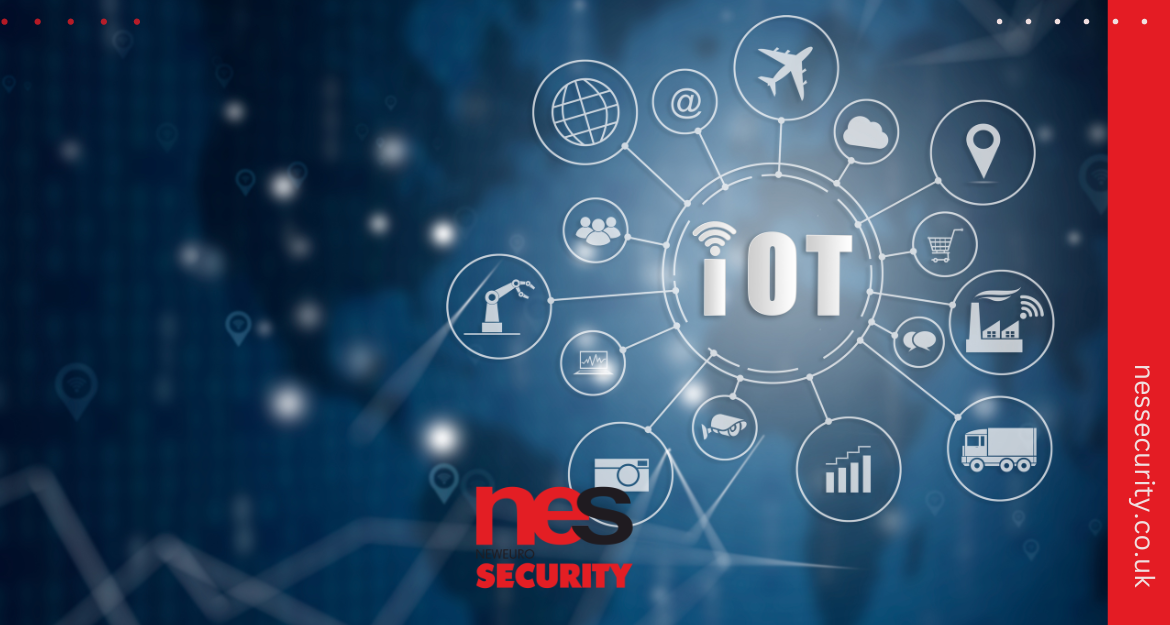The Internet of Things (IoT) has revolutionised the way we live and work, connecting devices and systems in unprecedented ways. However, the proliferation of IoT devices also brings new security risks and challenges. As we embrace the benefits of a connected world, it becomes crucial to prioritise network security for IoT devices. In this article, we will explore the risks associated with IoT devices, discuss the importance of network security in the IoT landscape, and delve into best practices for securing IoT devices. Join us as we uncover strategies to authenticate and control access to IoT devices, implement robust encryption and data protection, address privacy considerations, and navigate security challenges in industrial and critical infrastructure. Additionally, we will highlight the role of regulations and standards in IoT security and explain how Nes Security can partner with you to ensure comprehensive IoT network security.
Understanding the Risks of the Internet of Things (IoT) Devices
The rapid growth of IoT devices introduces various security risks. These risks include:
- Vulnerabilities: IoT devices often lack robust security measures, making them susceptible to cyberattacks and unauthorised access.
- Data Breaches: IoT devices collect and transmit sensitive data, creating potential vulnerabilities if not adequately protected.
- Botnets and DDoS Attacks: Compromised IoT devices can be harnessed to form botnets, used to launch large-scale Distributed Denial of Service (DDoS) attacks.
- Privacy Concerns: IoT devices collect personal information, raising concerns about data privacy and unauthorised surveillance.
The Importance of Network Security in the IoT Landscape
Network security plays a vital role in the IoT landscape. Securing the network infrastructure that connects IoT devices helps protect against unauthorised access, data breaches, and other cyber threats. By implementing robust network security measures, businesses and individuals can mitigate risks, safeguard sensitive data, and ensure the smooth operation of IoT devices.
Securing IoT Devices: Best Practices and Strategies
To enhance the security of IoT devices, it is essential to follow best practices and implement effective strategies, including:
Authentication and Access Control for IoT Devices
Implementing strong authentication mechanisms, such as unique credentials and multi-factor authentication, ensures that only authorised individuals can access and control IoT devices. Additionally, access control policies should be in place to limit privileges and permissions.

Implementing Robust Encryption and Data Protection
Encrypting data transmitted by IoT devices protects it from interception and unauthorised access. Robust encryption protocols, such as Transport Layer Security (TLS), should be employed to secure data in transit and at rest.
Regular Patching and Firmware Updates for IoT Devices
Regularly updating IoT device firmware and applying security patches is crucial for addressing known vulnerabilities. This ensures that devices remain resilient against emerging threats and benefit from the latest security enhancements.
Network Segmentation for Enhanced Security
Segmenting the network separates IoT devices into distinct zones, isolating them from critical infrastructure and sensitive systems. This practice helps contain potential breaches and minimise the impact of a compromised IoT device.
Authentication and Access Control for IoT Devices
Authentication and access control are fundamental for securing IoT devices. Strong authentication mechanisms, such as unique usernames and complex passwords, should be implemented. Multi-factor authentication (MFA), which requires additional verification beyond passwords, adds an extra layer of security. Access control policies should be established to define user permissions and restrict unauthorised access to IoT devices.
Implementing Robust Encryption and Data Protection
Encrypting data transmitted by IoT devices is crucial to protect it from interception and unauthorised access. Robust encryption protocols, such as Transport Layer Security (TLS), Secure Shell (SSH), or IPsec, should be implemented to secure data in transit. Additionally, sensitive data stored on IoT devices should be encrypted to prevent unauthorised access in case of physical theft or device compromise.
Regular Patching and Firmware Updates for IoT Devices
Regularly updating IoT device firmware and applying security patches is vital to address known vulnerabilities. IoT devices often rely on third-party software components, which may have their vulnerabilities. Keeping firmware up to date ensures that devices remain resilient against emerging threats and benefit from the latest security enhancements. Automated patch management systems can simplify the process of deploying updates across a large number of devices.
Network Segmentation for Enhanced Security
Network segmentation is crucial for enhancing the security of IoT devices. By dividing the network into separate segments, or VLANs, IoT devices can be isolated from critical infrastructure and sensitive systems. This segmentation helps contain potential breaches and limit unauthorised access, reducing the impact of a compromised IoT device. Implementing firewalls and access control lists (ACLs) between network segments adds an extra layer of protection.
Monitoring and Detection of IoT Device Threats
Implementing a robust monitoring and detection system is essential for identifying potential threats or anomalies related to IoT devices. Network monitoring tools can track device behaviour, detect unusual patterns, and generate alerts for suspicious activities. Additionally, intrusion detection systems (IDS) can monitor network traffic and identify potential security breaches or unauthorised access attempts.
Privacy Considerations in the IoT Ecosystem
Privacy is a critical concern in the IoT ecosystem. To address privacy considerations:
Data Minimization: Only collect and retain necessary data from IoT devices, minimising the risk of unauthorised access to sensitive information.
Consent and Transparency: Provide clear information to users about data collection and usage, obtain their informed consent, and allow them to exercise control over their data.
Data Encryption: Encrypt sensitive data collected by IoT devices to protect it from unauthorised access or interception.
Secure Data Storage and Transmission: Ensure that data is securely stored and transmitted, using encryption and secure protocols to maintain privacy.
Addressing IoT Security Challenges in Industrial and Critical Infrastructure
Securing IoT devices in industrial and critical infrastructure environments presents unique challenges. These challenges include:
- Legacy Systems: Retrofitting legacy systems with IoT capabilities while ensuring security can be complex. It is important to carefully integrate IoT devices into existing infrastructure, considering security implications.
- Complex Networks: Industrial environments often have complex networks, requiring diligent network monitoring, segmentation, and access controls to prevent unauthorised access and data breaches.
- Operational Technology (OT) and Information Technology (IT) Convergence: The convergence of OT and IT networks requires careful planning and coordination to ensure the security of both systems and prevent potential vulnerabilities.
- Supply Chain Risks: Securing the supply chain is crucial to prevent compromised IoT devices from entering critical infrastructure environments. Thorough vetting and verification processes for IoT device manufacturers and suppliers are essential.

The Role of Regulations and Standards in IoT Security
Regulations and standards play a crucial role in ensuring IoT security. Governments and industry bodies have introduced regulations and guidelines to promote secure IoT practices. Compliance with these regulations, such as the General Data Protection Regulation (GDPR) in the EU, helps protect user privacy and ensure the secure deployment of IoT devices. Adhering to standards, such as the ISO/IEC 27000 series or the Industrial Internet Consortium (IIC) Security Framework, guides implementing best practices in IoT security.
Partnering with Nes Security for Comprehensive IoT Network Security
Nes Security specialises in providing comprehensive IoT network security solutions tailored to your specific needs. Our team of experts can assess your IoT security requirements, recommend suitable strategies, and implement robust security measures. We offer services such as network monitoring, vulnerability assessments, security policy development, and incident response planning. By partnering with Nes Security, you can ensure that your connected devices are protected, your data is secure, and your IoT network operates with maximum resilience.


